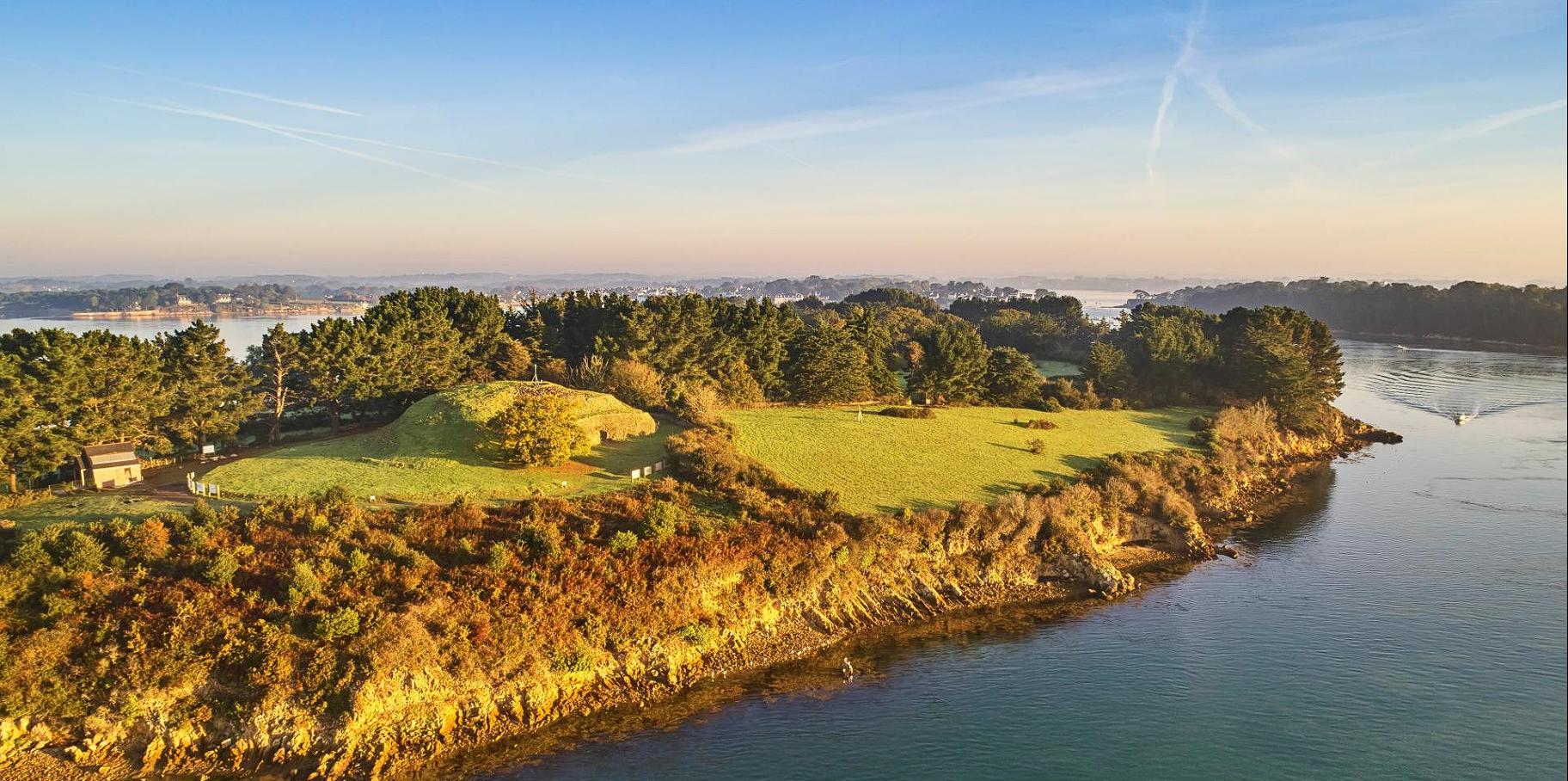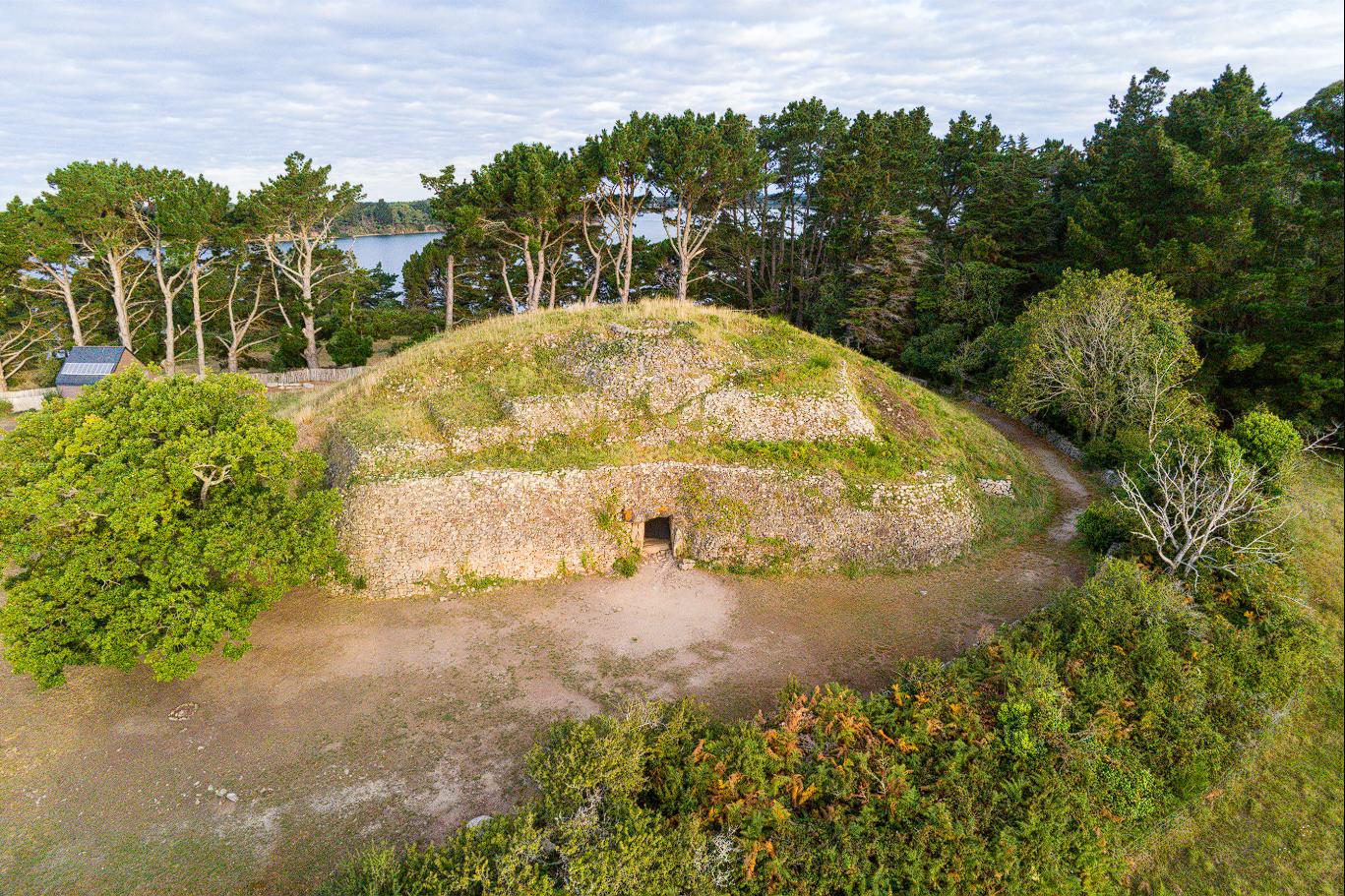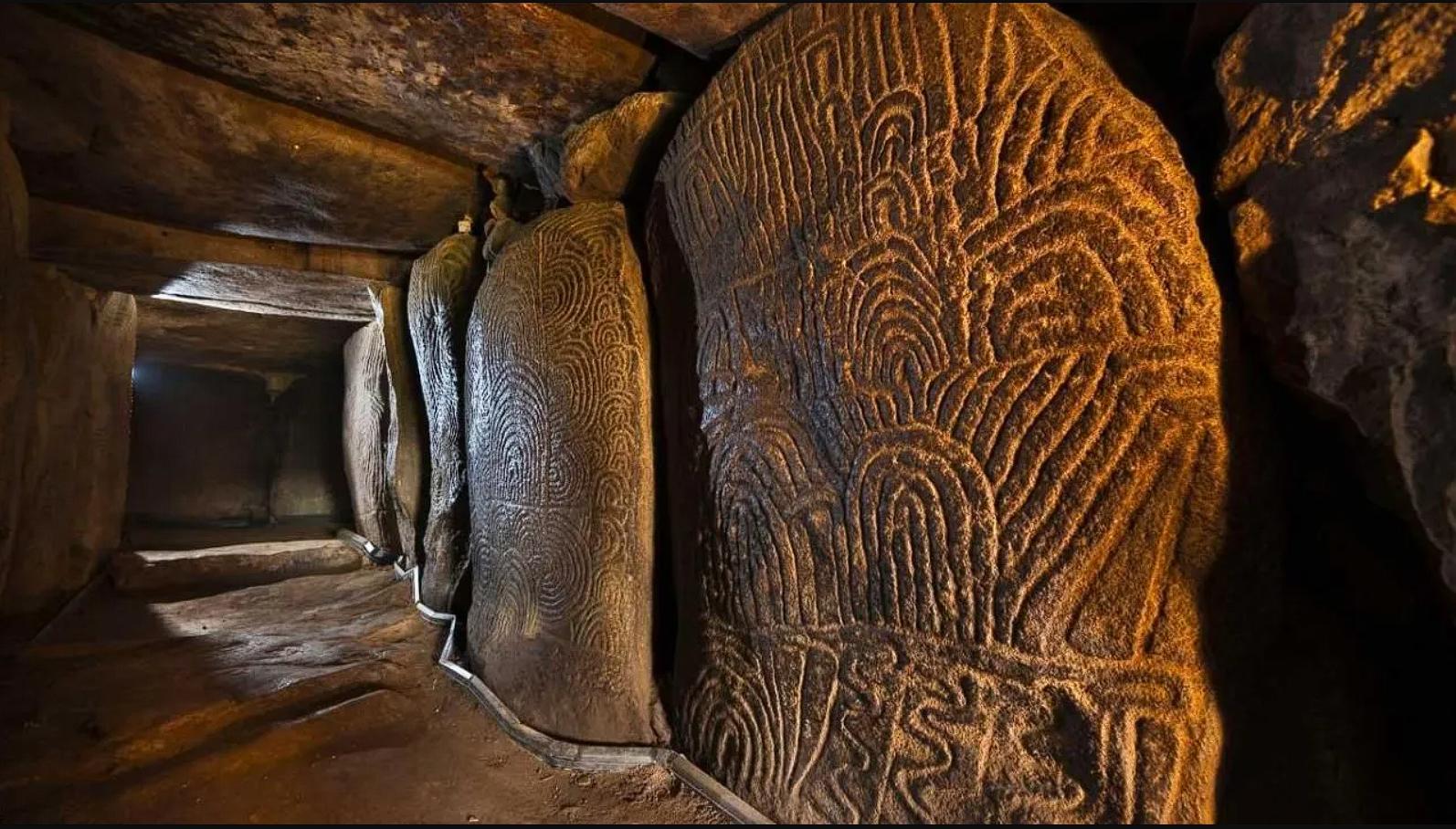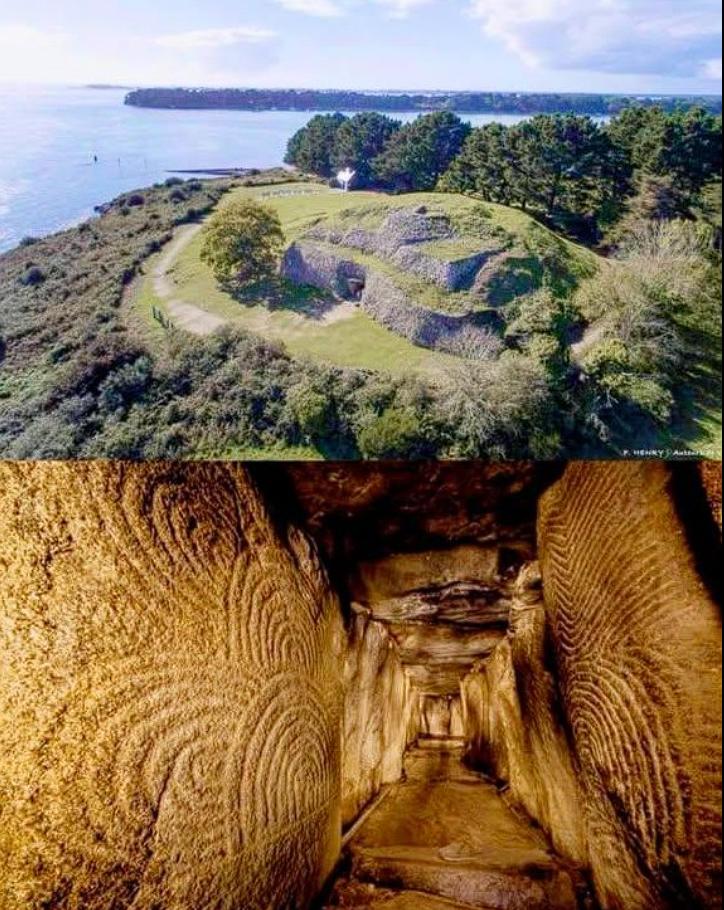Gavrinis, a remarkable megalithic monument located on a small island in Brittany, France, offers a glimpse into the sophisticated artistic and architectural achievements of Neolithic societies. Often referred to as the “Sistine Chapel” of the Neolithic era, Gavrinis is renowned for its intricate carvings and architectural complexity.
A Journey into the Neolithic Past
Gavrinis provides a unique window into the lives and beliefs of Neolithic people, showcasing their advanced skills and cultural practices.
Architectural Marvel
Gavrinis is an impressive passage tomb, constructed between 4200 and 4000 BC, featuring a large circular stone cairn covering an internal megalithic structure.

- Circular Stone Cairn:
- The monument is characterized by a large circular stone cairn, approximately 50 meters in diameter and 7.5 meters high.
- This impressive structure covers an internal megalithic tomb, showcasing the builders’ engineering skills.
- Internal Megalithic Structure:
- The internal structure comprises a quadrangular chamber and an access passage, typical of Neolithic chambered tombs in western France.
- The chamber is constructed of about 50 carefully placed slabs, with the ceiling slab weighing nearly 17 tons.
- Access Passage:
- The access passage leading to the chamber is about 14 meters long, lined with 29 upright stones.
- 23 of these stones are adorned with intricate carvings, providing insights into the symbolic world of the builders.
Intricate Megalithic Art
The intricate carvings found within Gavrinis are a testament to the artistic skills and symbolic beliefs of Neolithic people.

- Spirals and Zigzags:
- The carvings include a variety of geometric shapes, such as spirals and zigzags, which may have held symbolic meanings.
- These patterns demonstrate the builders’ artistic abilities and attention to detail.
- Depictions of Animals:
- The carvings also feature depictions of axes and horned animals, offering a glimpse into the builders’ symbolic world.
- These images may have represented important aspects of their daily lives or spiritual beliefs.
- Repurposed Stones:
- Some of the stones used in Gavrinis were repurposed from earlier monuments, revealing the reuse of materials and the evolution of artistic styles.
- This discovery highlights the continuity and change in Neolithic artistic practices.
Astronomical Alignment
The alignment of the passage in Gavrinis suggests that the builders may have had knowledge of astronomical events, particularly the winter solstice.

- Winter Solstice Sunrise:
- The passage is oriented towards the winter solstice sunrise, allowing light to penetrate the chamber during this significant event.
- This alignment indicates a possible understanding of celestial movements and their importance.
- Symbolic Significance:
- The alignment may have held symbolic significance, representing the rebirth of the sun or the renewal of life.
- It highlights the connection between Neolithic people and their environment.
- Astronomical Knowledge:
- The precise alignment suggests that the builders possessed a degree of astronomical knowledge.
- This knowledge may have been used for ritualistic or practical purposes.
A Legacy of Neolithic Ingenuity
Gavrinis stands as a testament to the ingenuity and cultural richness of Neolithic societies, offering valuable insights into their lives and beliefs.
Historical Significance
Gavrinis is a significant archaeological site, providing insights into the architecture, art, and beliefs of Neolithic people.

- Cultural Heritage:
- Gavrinis represents a significant cultural heritage, showcasing the achievements of Neolithic societies in Brittany.
- It offers a glimpse into the lives and beliefs of people who lived thousands of years ago.
- Artistic Achievement:
- The intricate carvings found within Gavrinis are a testament to the artistic skills of Neolithic people.
- They demonstrate a high level of craftsmanship and attention to detail.
- Architectural Complexity:
- The construction of Gavrinis required significant planning and engineering skills, highlighting the architectural complexity of Neolithic societies.
- It showcases their ability to work with large stones and create complex structures.
Archaeological Discoveries
Ongoing archaeological research at Gavrinis continues to uncover new insights into the monument and its builders.

- Repurposed Stones:
- The discovery that some stones were repurposed from earlier monuments has shed light on the reuse of materials in Neolithic societies.
- It highlights the evolution of artistic styles and the continuity of cultural practices.
- Hidden Carvings:
- The discovery of hidden carvings on the outer sides of some slabs has revealed a different style of art, suggesting a possible evolution of artistic techniques.
- It highlights the importance of continued research and exploration.
- Contextual Understanding:
- Archaeological research helps to contextualize Gavrinis within the broader landscape of Neolithic monuments in the region.
- It provides a deeper understanding of the cultural and social context in which the monument was built.
Visitor Experience
Gavrinis offers visitors a unique opportunity to step back in time and marvel at the artistic and architectural achievements of a long-lost civilization.
- Accessible by Boat:
- Gavrinis is accessible by a short boat trip from Larmor-Baden, adding to the sense of adventure and discovery.
- The journey to the island enhances the visitor experience.
- Guided Tours:
- Guided tours provide visitors with valuable information about the history, architecture, and art of Gavrinis.
- They offer insights into the lives and beliefs of the Neolithic people who built the monument.
- Educational Opportunities:
- Gavrinis offers educational opportunities for visitors of all ages, fostering a deeper appreciation for the past.
- It serves as a reminder of the ingenuity and cultural richness of our ancestors.
Gavrinis stands as a testament to the ingenuity and cultural richness of Neolithic societies, offering valuable insights into their lives and beliefs. Its intricate carvings, architectural complexity, and possible astronomical alignments make it a must-see destination for anyone interested in the ancient past.
